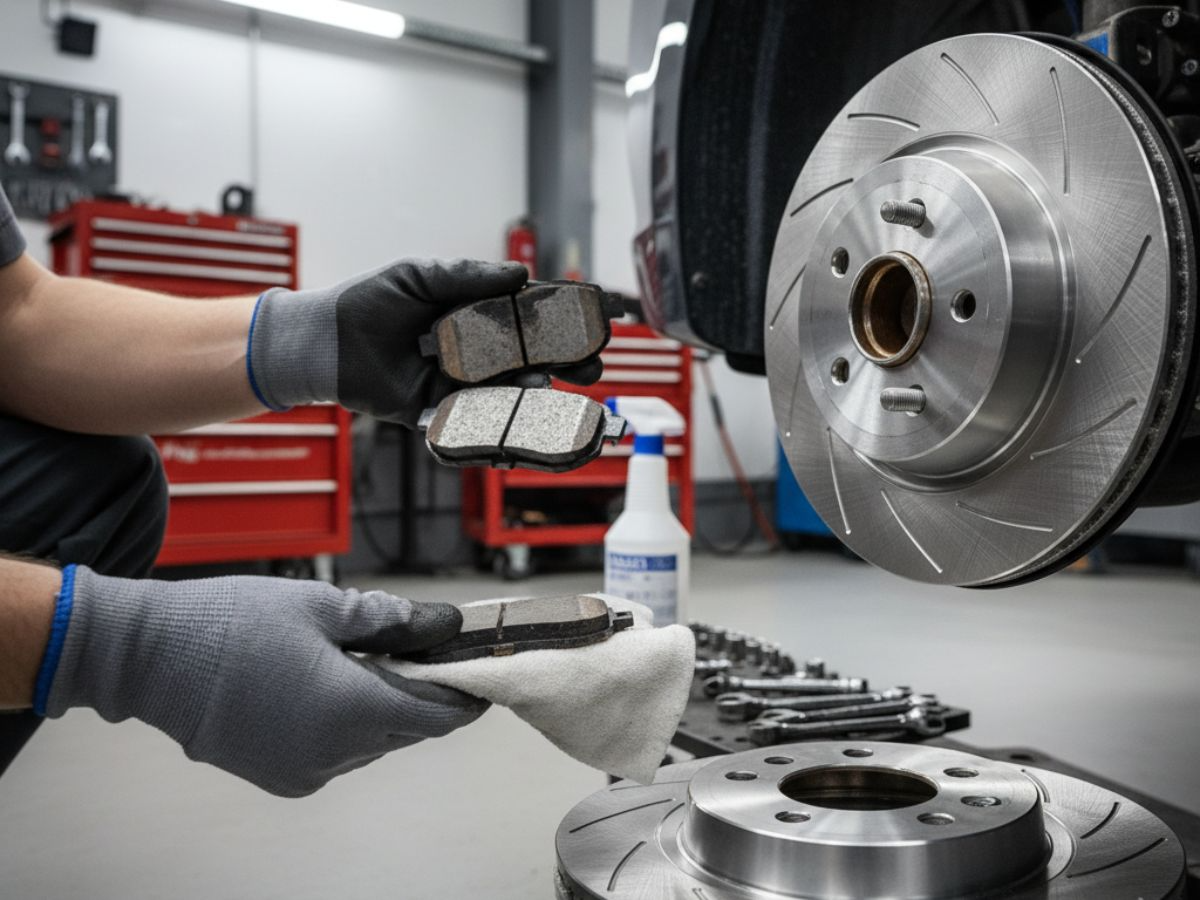Brakes aren’t something you can ignore. They’re easily the most important safety feature on your car. You can live with a squeaky fan belt or a dented bumper, but dodgy brakes? Not a chance. Whether you’re crawling through central London or slowing down from 70 on the M6, you rely on them every single time.
Most people only hear about pads and discs when a mechanic brings them up at a service. Trouble is, not everyone knows the difference. Or when to change one, or both. Let’s go through it in plain English.
Pads vs Discs – The Basics
Here’s the simple version:
- Brake pads are the small blocks that press against the discs every time you brake. They’re made of friction material, so they wear down fairly quickly.
- Brake discs (or rotors) are the larger metal plates that sit on the wheels. Pads clamp against them. They last longer but can get thin, cracked, or warped over time.
So pads are cheaper and need replacing more often. Discs go further, but once they’re done, it’s a pricier job.
How Do You Know They’re Worn?
Your car will usually tell you, if you’re paying attention.
Brake pads:
- Squealing when you press the pedal.
- A grinding noise (that usually means they’re gone completely).
- Longer stopping distances than you’re used to.
- On some cars, a little warning light pops up on the dash.
Brake discs:
- The pedal shakes or pulses when you slow down.
- You can see grooves, cracks or shiny uneven wear on the discs.
- Grinding noises even with new pads.
- Brakes just don’t feel sharp anymore.
Leave it too long, and worn pads can chew into the discs. That’s when the repair bill doubles.
How Long Do They Last in the UK?
This is where it depends.
- Pads: usually 25,000–50,000 miles. In stop-start traffic, expect the lower end.
- Discs: about 50,000–70,000 miles. But potholes, towing, or hard braking can kill them earlier.
I’ve seen careful motorway drivers squeeze years out of one set. On the flip side, I’ve had London taxi drivers back in the garage in under 18 months because of all the speed bumps.
What Does It Cost?
A rough UK guide looks like this:
- Brake pads: £100–£150 per axle.
- Brake discs: £200–£400 per axle, often including new pads.
Discs are pricier, but swapping both pads and discs at once often saves labour costs later on.
Front vs Rear
Front brakes do most of the work, so front pads usually wear quicker. Rears last longer, but they matter for balance and stability. Most garages recommend replacing them in pairs, both fronts or both rears, so everything feels even when you brake.
Do You Always Need Both?
Not always.
- If the discs are still thick enough and not damaged, just pads will do.
- If the discs are scored, cracked, or warped, replace both.
Putting fresh pads on old discs isn’t ideal. They won’t bed in properly, and performance will suffer.
Brake Care Tips
A few simple habits save money in the long run:
- Have them checked every service or around 10,000 miles.
- Replace pads before they eat into the discs.
- Go easy on hard braking unless you have to.
- Always replace in pairs (fronts together, rears together).
- Don’t ignore squealing or grinding, it’s never “just a noise”.
- After any replacement, test your brakes gently before driving off normally.
Pads vs Discs at a Glance
| Feature | Brake Pads | Brake Discs |
| Function | Pads grip the discs | Metal disc clamped by pads |
| Lifespan | 25,000–50,000 miles | 50,000–70,000 miles |
| Cost | £100–£150 per axle | £200–£400 per axle |
| Signs | Squealing, grinding, weak stops | Vibration, grooves, cracks |
| Replacement | More often | Less often, higher cost |
Final Thoughts
Pads and discs are both vital. Pads wear out faster and are cheaper to change. Discs last longer but hit harder on the wallet. Ignore either and you’ll risk safety, bigger bills, or both.
The best approach? Keep an eye (and ear) on the warning signs, get regular checks, and don’t wait until things get dangerous. A good local garage will tell you whether it’s just pads this time, or if the discs are due as well.
Schedule your service at a local car repair garage
